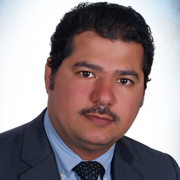Day 1 :
Keynote Forum
Khaled Alkattan
Alfaisal University, Saudi Arabia
Keynote: Role of Surgery in NSCLC
Time : 10:00-10:45

Biography:
Khaled Manae Al-Kattan, Dean College of Medicine, Alfaisal university and Consultant Thoracic Surgery and lung transplant at King Faisal Specialist Hospital & Research Centre. He was a co-founder of both the Saudi thoracic society and Pan Arab Chest Society. He is the Middle East regent for the European Society of Thoracic Surgery. Have extensive research and publication in his field, presented many abstracts in international symposiums. Was invited as an international speaker in many medical events. He is the Chairman of the National Lung Cancer Study Group and the national lung transplant program.
Abstract:
Keynote Forum
Mohammed AlAhmari
Prince Sultan Military College of Health Sciences, Saudi Arabia
Keynote: Noninvasive ventilation (NIV) in Acute Respiratory Failure

Biography:
Abstract:
- Heart and Lung Transplant | Diagnosis of Pulmonary Disorders
Location: Boardroom 350

Chair
Mohammed AlAhmari
Prince Sultan Military College of Health Sciences, Saudi Arabia
Session Introduction
Deborah Pierce
Amana Healthcare Long Term Medical and Rehabilitation Hospital, UAE
Title: Early mobilization of the ventilated patient: The when, how, why and impact
Time : 12:10-12:40
Biography:
Abstract:
Biography:
Abstract:
Mouhamad Ghyath Jamil
King Faisal Specialist Hospital& Research Center, Saudi Arabia
Title: Heart rate variability and outcomes prediction in critical illness
Biography:
Abstract:
- Cardiac Diseases |Pulmonary Disorders
Location: Boardroom 350
Chair
Hatem H. AlMasri
King Abdulaziz Medical City, Saudi Arabia
